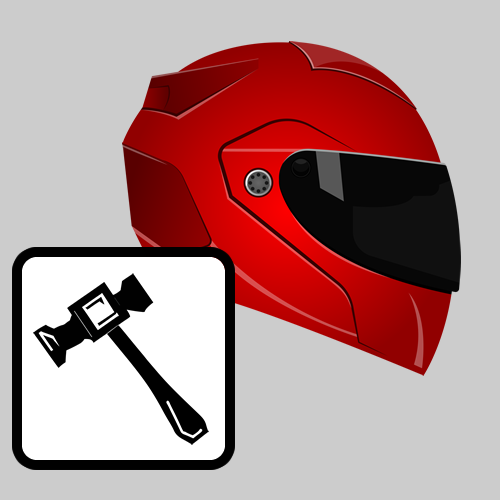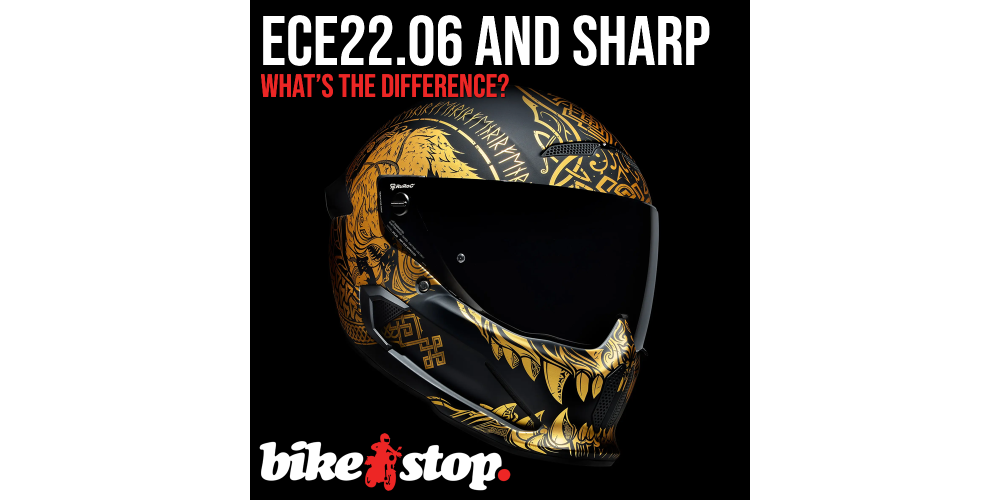I think it's fair to say that every biker, without exception, knows their helmet is arguably the most important part of their riding gear. To underline its importance, it's also the only item in our protective ensemble that's mandated by law. Most seasoned bikers will have a good understanding of what to look for when choosing a helmet. Primarily, it must fit correctly, and it has to be comfortable. Once those two important bits are sorted, we then move on to weight, brand and features before deciding on external appearance and what looks coolest. However, underlying all of these attributes and properties are safety standards and ratings.
As of today, every helmet sold within the UK and EU must comply with the ECE standard. Although labelled as ECE, this standard does not originate from the EU. Rather, it stems from the United Nations, and the acronym 'ECE' represents the 'Economics Commission for Europe.' As such, Brexit will not affect the requirement for UK motorcyclists to comply with ECE regulations. The original ECE22 standard was agreed upon way back in 1972 but didn't come into effect until 1982 as the ECE22.02 standard.
In the UK, we've used the ECE22.05 standard since the early 2000s, but that was a long time ago, and safety technology has moved on a lot since then. The revised ECE22.06 standard first appeared in 2020, and while some manufacturers have been producing ECE22.06-certified models for a few years now, it hasn't been mandatory to meet the requirements. That's set to change in January 2024 when all helmets sold within the UK and EU must comply with the new standard.
The Standard


Impact Absorption
Helmets must demonstrate sufficient ability to absorb and dissipate energy from impacts. This is evaluated through laboratory tests where the helmet is dropped onto different surfaces, measuring the force transmitted to the headform inside.


Penetration Resistance
Helmets must provide protection against the penetration of sharp objects, such as debris or projectiles, which could otherwise cause severe injuries. The shell and inner components are tested to resist penetration from various angles and forces.


Shell Integrity
The integrity and structural strength of the helmet shell are assessed to ensure it can withstand impact without fracturing or deforming excessively. This helps prevent direct head contact with rigid surfaces during an accident.


Retention System
The retention system, usually comprising chinstraps and fasteners, is tested to ensure it can securely keep the helmet on the wearer's head during an accident or sudden impact. The strength of the chinstrap and buckle is assessed, ensuring they can withstand forces without failing.


Field of Vision
ECE22.06 specifies minimum requirements for the helmet's field of vision, ensuring riders have adequate peripheral vision to perceive potential hazards on the road. This helps maintain situational awareness and enhances safety.


Visor Performance
ECE22.06 defines requirements for visors, including their optical quality, resistance to impact, and resistance to scratching. These standards help ensure that the visor maintains clear visibility and protects the rider's eyes.


Labeling and Markings
Helmets meeting ECE22.06 requirements must display the appropriate certification labels and markings to indicate compliance. This allows users and authorities to easily identify approved helmets.
How is this different to SHARP ratings?
ECE22.06 is like the guardian angel of motorcycle helmets and is a strict set of regulations to which helmets must adhere. SHARP tests are ratings that give consumers a quick and easy reference to see how their already legally-compliant helmet performs in specific tests. SHARP is like the Simon Cowell of the motorcycle world. It stands for Safety Helmet Assessment and Rating Programme, and just like Simon, it's here to rate and pass judgement.
So, how do ECE22.06 and SHARP tests tango together? Well, ECE22.06 sets the baseline requirements for motorcycle helmets, as detailed in the table above. It's the rulebook that all helmets need to follow. However, SHARP takes things to the next level. It's like the helmet Olympics, putting those lids through rigorous tests to see how they perform in real-life scenarios. It's not just about meeting the minimum requirements; it's about exceeding them and going for gold.
Imagine a helmet on a reality TV show, facing challenges like impact tests, strap strength trials, and even a dash of mistreatment to see if it cracks under pressure. SHARP rates these helmets with a star system, from one star (let's call it the "bless your heart" rating) to five stars (the "woohoo, you nailed it!" rating). So, ECE22.06 is the starting point, the rulebook that keeps helmets safe, and SHARP tests take it up a notch, giving helmets the opportunity to shine and prove their worth.
So next time you're shopping for a helmet, remember these points:
- Buy from a reputable retailer to avoid counterfeit items and have easy access to warranties
- From January 2024, ensure your helmet meets the ECE22.06 standard (although it wouldn't hurt to look for ECE22.06 helmets now)
- Fit, feel, and comfort are paramount and should never be compromised
- A SHARP rating will give an indicator of performance above and beyond the baseline of ECE22.06
- Black and gold helmets will always look cool
If you're still lost and require help with choosing your next helmet, speak to the team at Bike Stop who will be more than happy to ensure you make the correct purchase.






